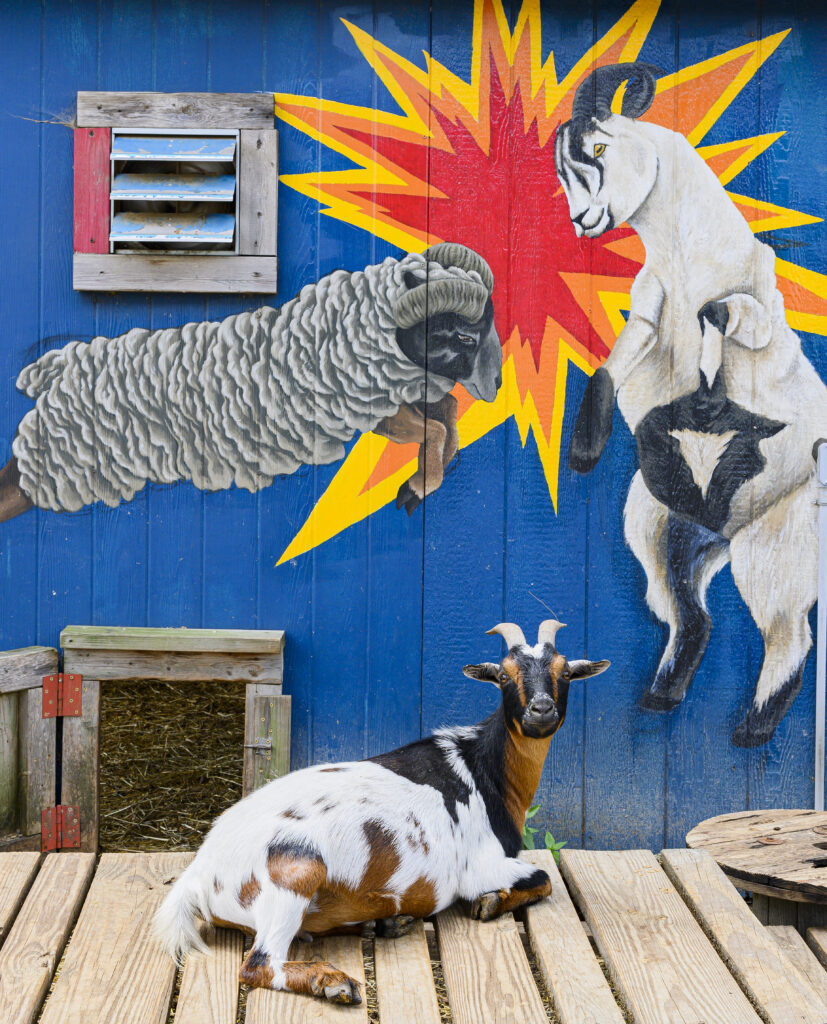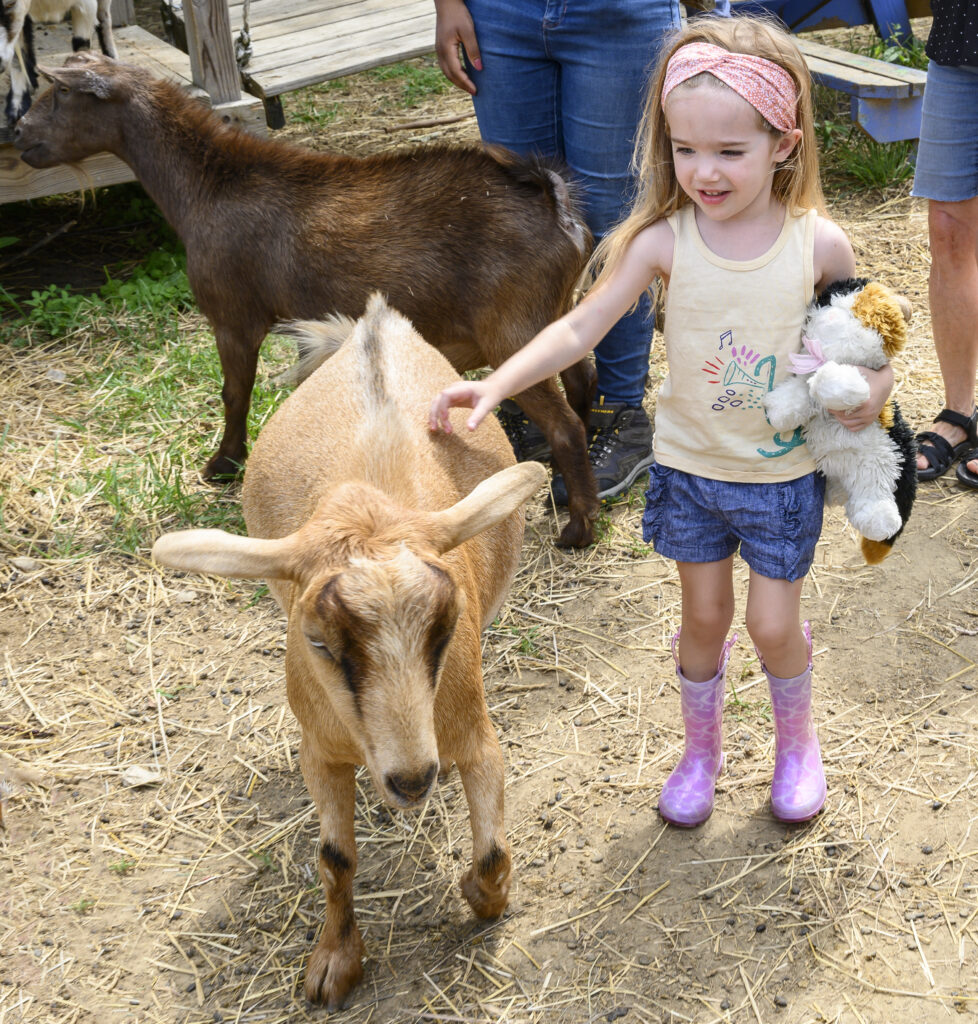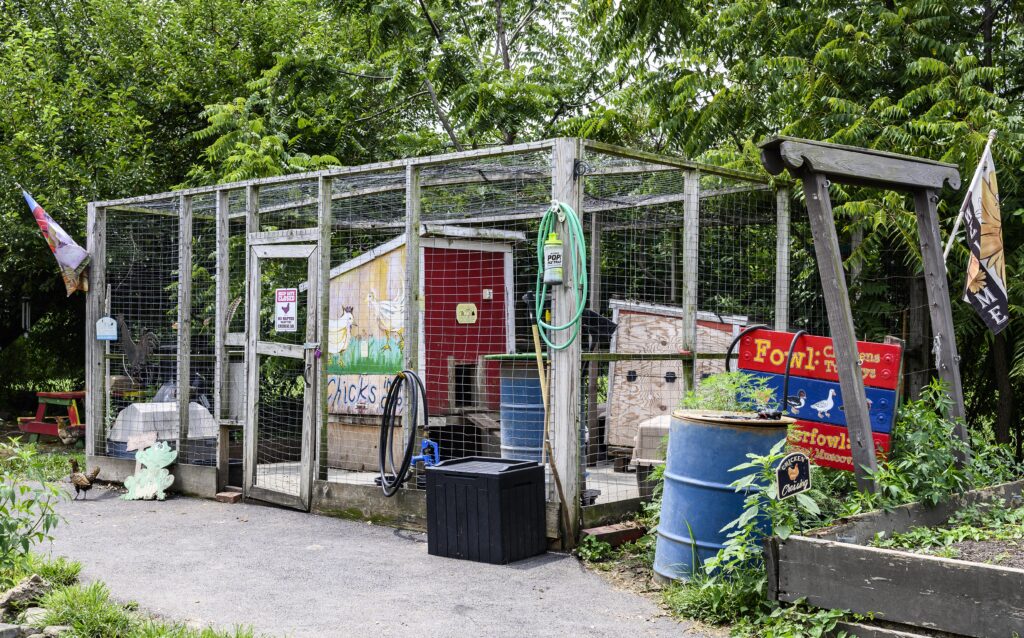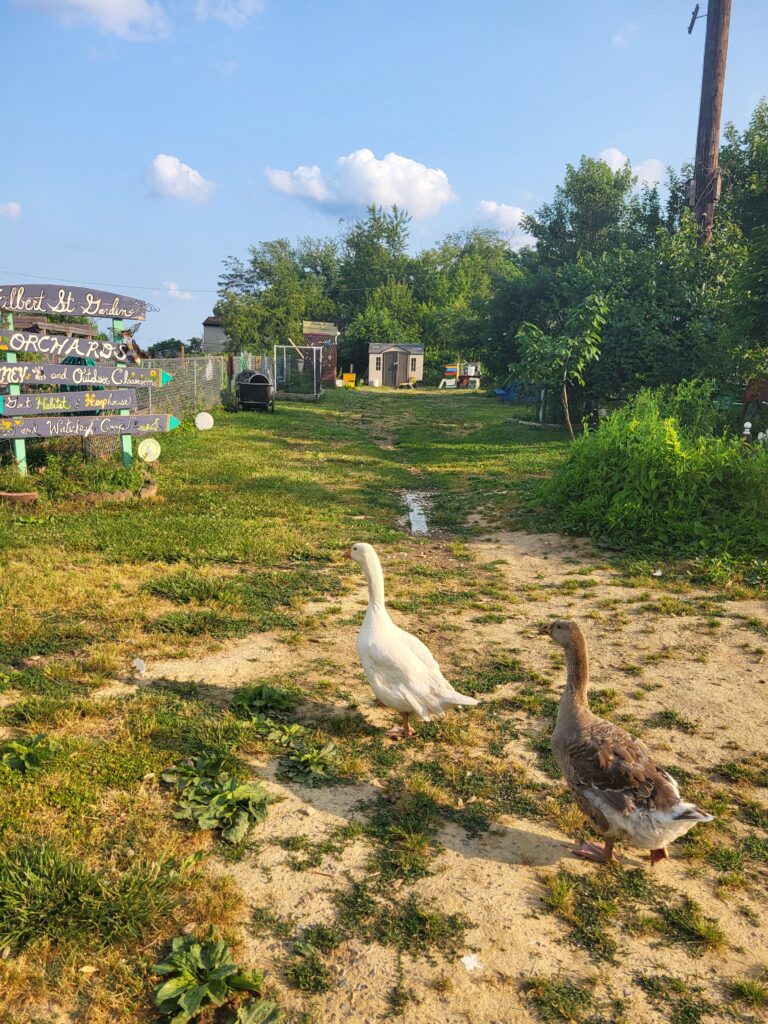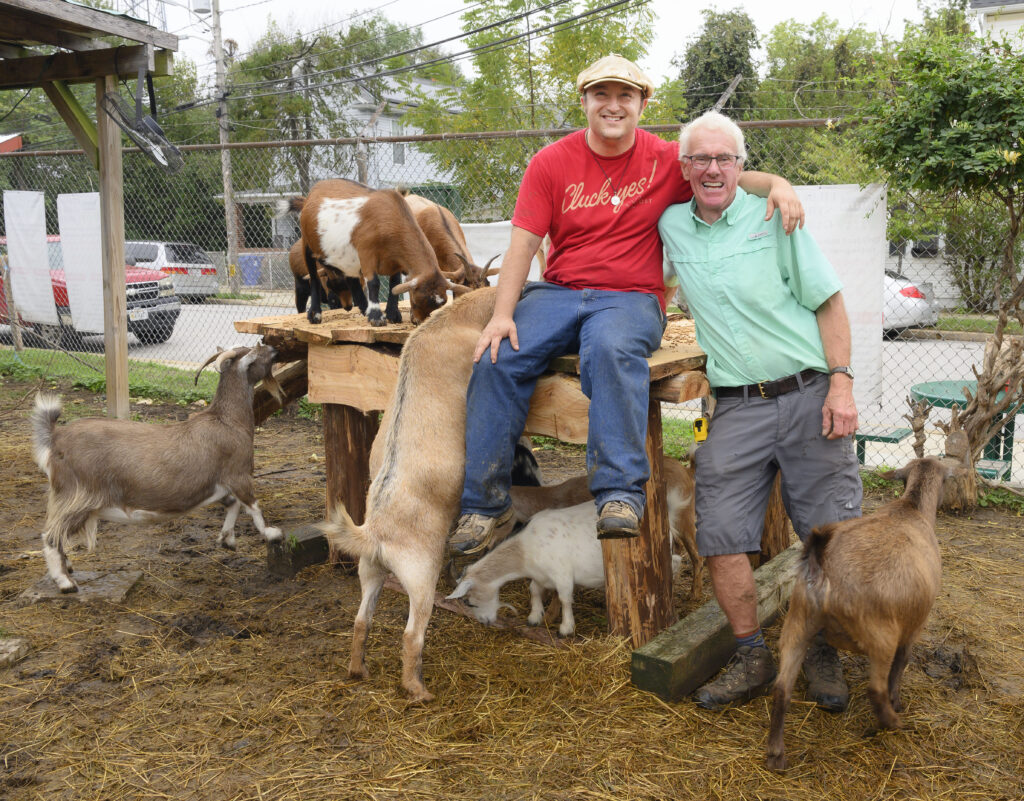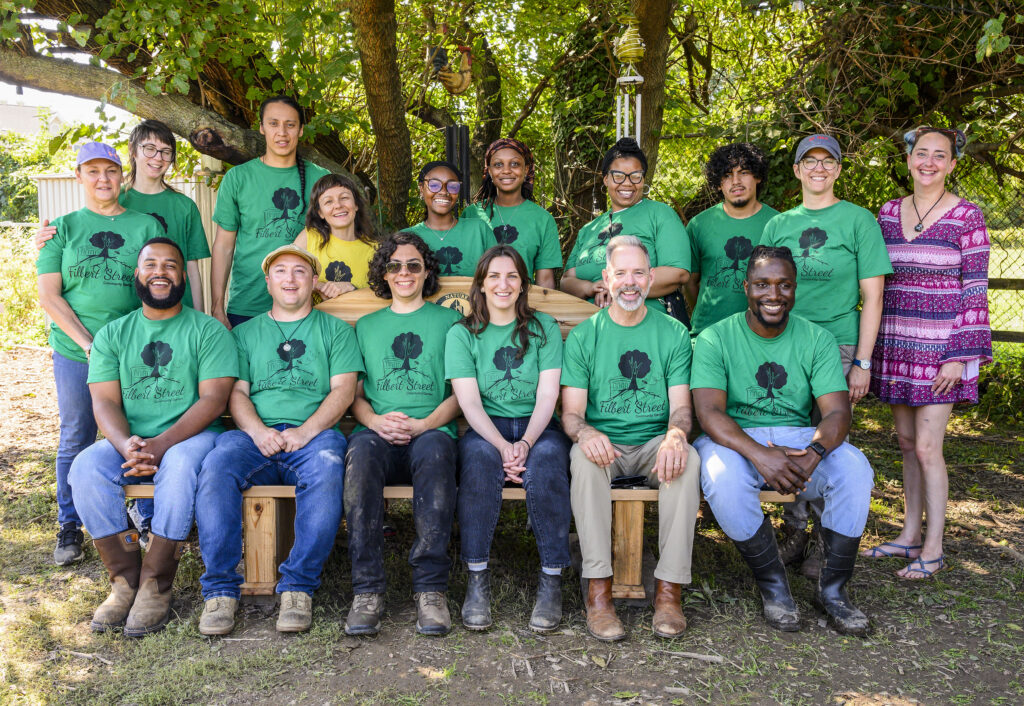The Curtis Bay and Brooklyn neighborhoods have been a haven for immigrants since 1900. Polish, Italians, and Irish in then and Hispanics, Russians, South Asians now. As Central Baltimore has become gentrified, residents have had to move to Curtis Bay, Brooklyn, and Cherry Hill to be able to afford to live. Their garden was established by these “refugees of gentrification,” and has become a safe place for the lost and displaced. These neighborhoods face a number of challenges, including poverty, industrial pollution, growing drug issues, and a lack of Internet, libraries, and food access. The Filbert Street Garden has been around for over a decade to mitigate the food desert, provide a greenspace for recreation, a learning space for education, a home for rescue livestock, and a green oasis for urban wildlife. With the largest community beeyard in Maryland, their honeybees pollinate a 2-mile radius around the garden. The garden offers 50 community plots, free Internet (FilbertNet), and a curbside pantry. They employ local kids during the summers and falls, as there are no other local job opportunities and only 1/3 of residents have access to a car. While the site is gated for security purposes, it has regular open hours and programming to welcome neighbors into the space.
The garden is a haven and spot of joy in the neighborhood landscape, not only for the human denizens but for domesticated and wild fauna as well: the garden keeps sheep, chickens, bees, rescued goats (that like to say hello to passersby on the street), and hosts native bats. The Sacred Place process supported broader engagement and openness within the community, and built on Filbert Street’s vision for their Sacred Place to be a haven where anyone who is lost – human and animals alike – can be found. Through the design process, we assembled a masterplan that would serve Filbert Street Garden’s immediate needs as well as bring momentum to its long-term goals. Key elements of the masterplan included changing the location of the bird coop to be clustered with the other animal enclosures and expanding it significantly; formalizing a pathway system to ease access, wayfinding, and FSG’s ability to give tours of the space; using the expanded area left by the moving of the bird coop to enhance its outdoor classroom and gathering areas; and adding a portal that in itself is an expanded gathering area. Of this, the expanded bird coop and the pathways were identified as the highest priority items, and formed phase 1 of the masterplan.
The Mulberry Gander’s vision statement encapsulates beautifully what the Sacred Place stands for: This Sacred Place will revitalize the shared habitat of Filbert Street Garden’s many creatures and caretakers, re-envision the garden’s capacity to serve its community and work to make the space accessible to all visitors. By growing a refuge rooted in justice, Filbert Street Garden seeks to offer a Sacred Place where those who feel lost can be found.
Design Team:
Maura Roth-Gormley, Landscape Designer and Arborist, Floura Teeter Landscape Architects
Zolna Russell, Principal, Floura Teeter Landscape Architects
Kaila Blevins, Landscape Designer, Floura Teeter Landscape Architects
Raena Nola, Landscape Designer, Floura Teeter Landscape Architects
Matt Ellingson, Associate, Floura Teeter Landscape Architects
